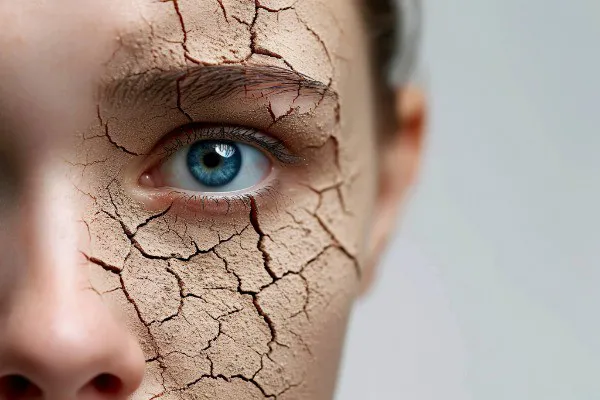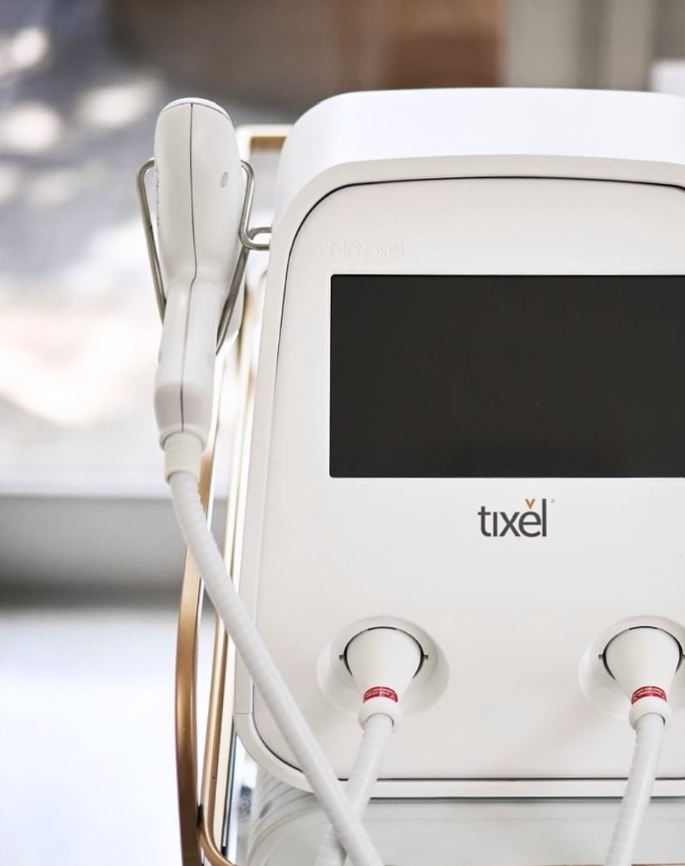
Not a dry eye in the house
Thermal Mechanical Action (TMA) the treatment of Dry Eye Disease
Thermal Mechanical Action (TMA), a groundbreaking patented technology by Novoxel, represents a significant advancement in aesthetic medicine. By offering a clinical solution to a wide range of skin concerns, TMA is positioning itself as a compelling alternative to traditional laser and radiofrequency modalities. With numerous clinical studies and peer-reviewed publications supporting its efficacy and safety, this innovative approach is reshaping the landscape of skin rejuvenation and resurfacing.
Additionally, TMA has achieved FDA clearance for the treatment of Dry Eye Disease, broadening its application beyond aesthetics and into therapeutic ophthalmology.
What is Thermal Mechanical Action (TMA)?
TMA operates on a distinct principle of delivering controlled heat to the skin through conduction, as opposed to the absorption-based mechanisms utilised by lasers. This unique mechanism allows for a more efficient and precise energy transfer, targeting the skin layers with minimal collateral damage.
Unlike lasers that rely on chromophore absorption and radiofrequency devices that generate heat via electromagnetic waves, TMA uses a matrix of tiny, heated tips to deliver pure thermal energy. This controlled conduction provides superior uniformity, ensuring consistent results while minimising the risk of side effects.
How does TMA Work?
The process begins with the device’s array of heated tips making brief, controlled contact with the skin. These tips reach temperatures up to 400°C, creating microthermal zones within the skin. This localised delivery of heat initiates a cascade of physiological responses, including collagen remodelling, elastin synthesis, and enhanced skin turnover.
In the context of treating Dry Eye Disease, TMA stimulates the meibomian glands, improving their function and increasing the production of the lipid layer of the tear film. This novel approach offers a non-invasive and radiation-free solution for a condition that affects millions globally.
A pivotal clinical study comparing TMA with traditional ablative lasers demonstrated comparable improvements in skin texture and elasticity, with TMA offering the added benefits of reduced downtime and greater treatment safety in sensitive areas.
Key Advantages of TMA Technology
- No Radiation: Unlike lasers, which can emit light radiation, TMA eliminates any associated risks by relying solely on conduction-based heat transfer. This makes it a safer option for patients concerned about long-term exposure to radiation.
- Safe for the orbital region: TMA’s precision allows it to treat areas within the orbital socket, such as the delicate periorbital skin, with unparalleled safety and efficacy. This capability opens doors to treating fine lines and wrinkles in areas traditionally challenging for lasers and other energy-based devices.
- FDA-cleared for dry eye treatment: The FDA clearance for Dry Eye Disease marks a significant milestone for TMA technology. By addressing the dysfunction of meibomian glands, TMA provides an effective, non-invasive treatment option for a condition that impacts patients’ quality of life.
- Versatile applications: TMA supports a range of treatments, from sub-ablative and non-ablative skin resurfacing to deeper remodelling procedures. Its versatility enables practitioners to customise treatment protocols for specific indications, including acne scars, hyperpigmentation, and overall skin rejuvenation.
Clinical evidence supporting TMA
A notable peer-reviewed study on TMA’s effectiveness in skin resurfacing highlighted its ability to deliver results comparable to fractional CO2 lasers while maintaining a significantly lower risk profile. Patients reported improvements in skin texture, tone, and firmness after a series of TMA treatments, with minimal downtime and discomfort.
In the realm of ophthalmology, clinical trials demonstrated significant improvement in Dry Eye Disease symptoms following TMA treatments. Patients experienced enhanced tear quality and reduced ocular discomfort, with sustained benefits observed during follow-ups.
Another study focused on TMA’s impact on collagen regeneration demonstrated a 30% increase in dermal collagen density six months post-treatment. These findings underscore the long-term benefits of TMA for skin health and anti-ageing.
Revolutionising skin treatment with TMA
The emergence of Thermal Mechanical Action by Tixel marks a paradigm shift in aesthetic medicine and therapeutic ophthalmology. By addressing a broad spectrum of skin concerns with precision, safety, and versatility, TMA is paving the way for a 360-degree approach to skin health. Its ability to deliver pure heat through conduction, combined with its robust clinical validation and FDA clearance for Dry Eye Disease, positions TMA as a credible and effective alternative to traditional energy-based modalities.
As the field of dermatology and ophthalmology continues to evolve, TMA stands out as a technology capable of meeting the growing demand for effective, patient-centred, and minimally invasive treatments.

